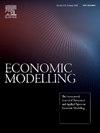尖刻的广告
IF 4.2
2区 经济学
Q1 ECONOMICS
引用次数: 0
摘要
当卖方以保密方式向影响者支付费用,让其传播对产品有利的信息时,就会出现 "枕头广告"。在此,我们提出了一个涉及知情卖家、影响者和第二期追随者的两期模型。我们的模型探讨了为什么低质量产品的卖家会更多地参与甩卖广告,尽管长期以来一直有人认为高质量卖家会做更多广告以鼓励重复购买。我们的研究表明,高质量的卖家没有那么大的动力去做虚假广告,因为这样做会破坏第一期影响者口碑传播的可信度。对广告行为的这一新认识主要是由我们所说的 "信誉效应 "驱动的。本文章由计算机程序翻译,如有差异,请以英文原文为准。
Shill Advertising
Shill advertising occurs when sellers confidentially pay influencers to transmit favorable messages about a product. Here, we present a two-period model involving informed sellers, influencers, and second-period followers. Our model addresses why sellers of low-quality products engage more in shill advertising, despite the longstanding argument that high-quality sellers advertise more to encourage repeat purchases. We show that high-quality sellers have less incentive to engage in shill advertising, as doing so undermines the credibility of word-of-mouth communication from first-period influencers. This new insight into advertising behavior is primarily driven by what we call the “credibility effect”.
求助全文
通过发布文献求助,成功后即可免费获取论文全文。
去求助
来源期刊

Economic Modelling
ECONOMICS-
CiteScore
8.00
自引率
10.60%
发文量
295
期刊介绍:
Economic Modelling fills a major gap in the economics literature, providing a single source of both theoretical and applied papers on economic modelling. The journal prime objective is to provide an international review of the state-of-the-art in economic modelling. Economic Modelling publishes the complete versions of many large-scale models of industrially advanced economies which have been developed for policy analysis. Examples are the Bank of England Model and the US Federal Reserve Board Model which had hitherto been unpublished. As individual models are revised and updated, the journal publishes subsequent papers dealing with these revisions, so keeping its readers as up to date as possible.
 求助内容:
求助内容: 应助结果提醒方式:
应助结果提醒方式:


